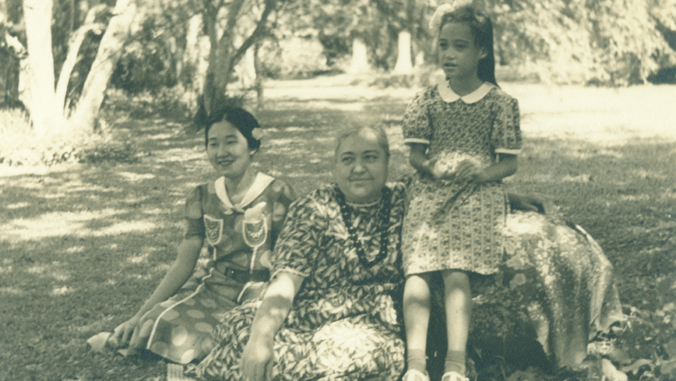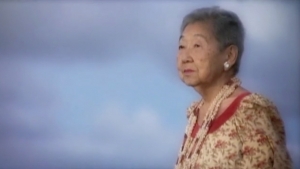
Hawaiʻi is mourning the loss of revered Hawaiian knowledge and ʻōlelo Hawaiʻi (language) expert Patience Namaka Wiggin Bacon, known to many as “Aunty Pat.” Bacon died on January 23, 2021, and she was 100 years old. Loved ones publicly announced her death in early March 2021. The Oʻahu native was a hānai (adopted) daughter of renowned ʻōlelo Hawaiʻi scholar, Mary Kawena Pukuʻi, who is celebrated for publishing the definitive Hawaiian-English Dictionary and Place Names of Hawaiʻi. Like Pukuʻi, Bacon dedicated her life to ensure the survival of Hawaiʻi’s native tongue.
For years, Bacon demonstrated perseverance through multiple terms of service on a University of Hawaiʻi panel established to protect and encourage a deeper knowledge of ʻōlelo and the state’s native culture—UH Committee for Preservation and Study of Hawaiian Language, Art and Culture.
“The committee to preserve everything, as it was lovingly called, fostered projects, many of which became educational or research resources, like Hawaiian newspapers, legends…” said UH Mānoa Hawaiian language Professor Emeritus Puakea Nogelmeier. More than 200 projects were funded through the UH committee’s efforts and resources.
Bacon’s preservation work largely took place at Bishop Museum where she spent more than 60 years. She was integral in translating piles of old audiotapes filled with mānaleo (native speakers) sharing Hawaiʻi’s oral histories. Those transcripts are still widely utilized in Hawaiian language curriculum at UH.
Facing criticism over non-Hawaiian ethnicity

Despite her countless contributions to ʻōlelo Hawaiʻi, Bacon, who was Japanese, faced bouts of racial scrutiny. In 2007, Kamehameha Schools produced a documentary about her life. One section features retired UH Mānoa Hawaiian and Indo-Pacific Languages Professor Naomi Losch, a close friend of Bacon. She tears up talking about those criticisms.
“People say well, ‘she doesn’t have Hawaiian blood,’” Losch said. “But our blood doesn’t carry cultural traits. It’s something we learn. And you learn how to be Hawaiian. It’s nothing to do with blood quantum.”
Nogelmeier recalls Bacon’s stance with ethnically charged experiences. “She faced serious derision from certain corners for not being ‘blood’’ and did so with humor and grace. ‘Take the high road; there’s less traffic and the view is better,’” he noted.
Hula expertise called on during competitions
Aside from language, the treasured archivist was also a loea hula (hula master) having trained alongside her mother, under legendary kumu (teachers) Keahi Luahine and Joseph Ilalaole. Years of lessons helped keep a number of hula kahiko (traditional hula), protocol and cultural context from vanishing. Bacon’s expertise was often called upon to judge hula competitions such as the Merrie Monarch Festival.
UH Mānoa Native Hawaiian affairs program officer Kaiwipuni Lipe is a longtime ʻōlapa (dancer) and recalls her kumu (teacher) pointing out specific motions in songs that are associated with Bacon’s influence on hula. “For me, she is a pivotal kūpuna that connected ʻike (knowledge) from our past from people we didn’t have the chance to know with those who are here today.”
Bacon’s knowledge of Hawaiʻi’s heritage and ancient traditions has touched generations and will forever enhance the ongoing push to preserve the very essence that pulsed through ka pae ʻāina o Hawaiʻi, the islands of Hawaiʻi for centuries.

